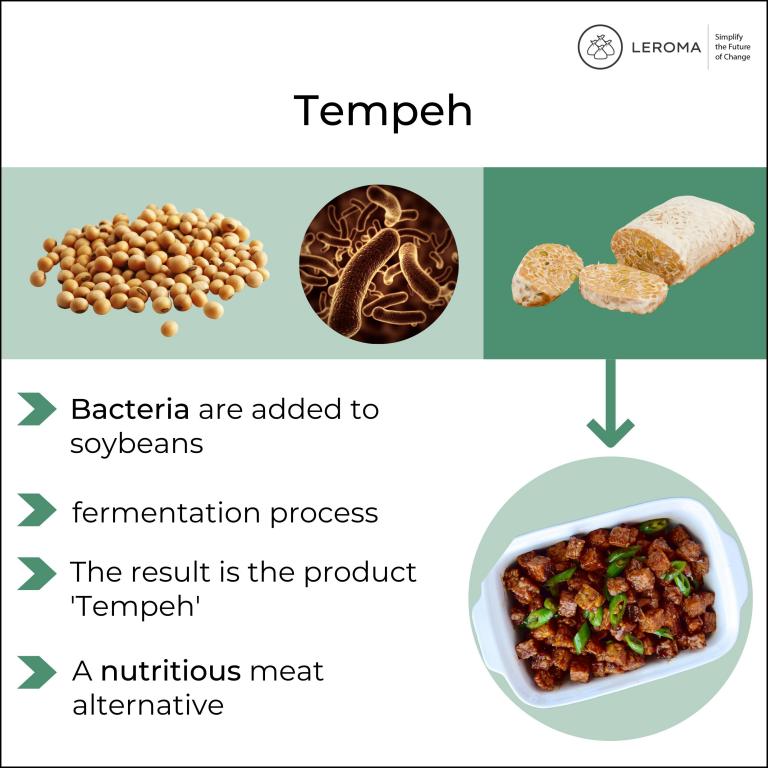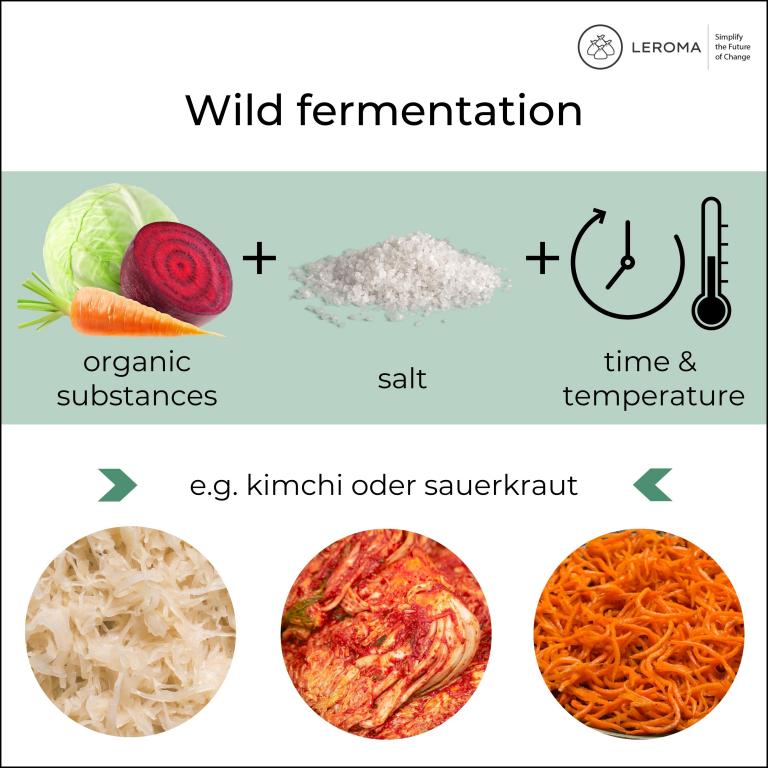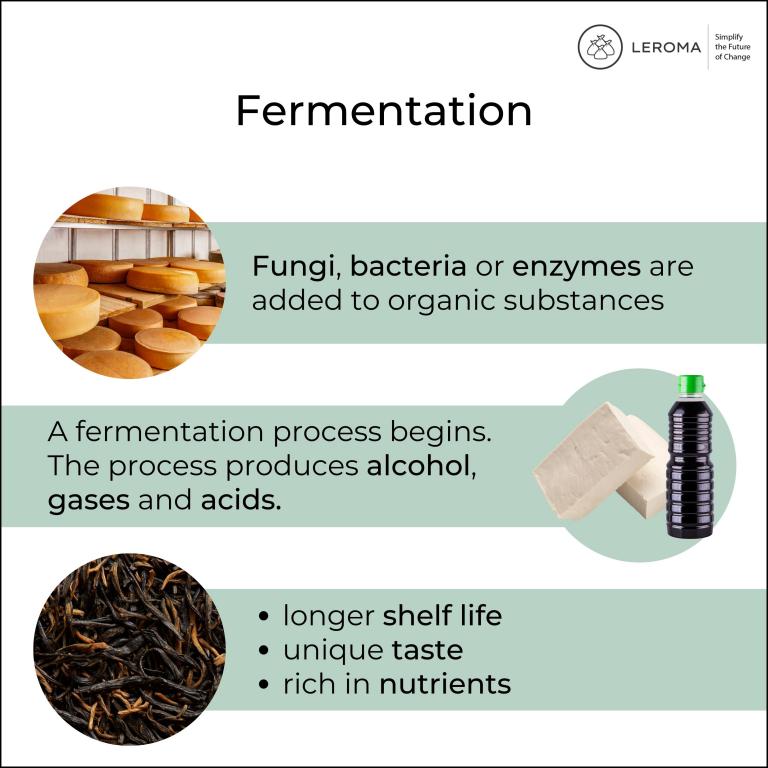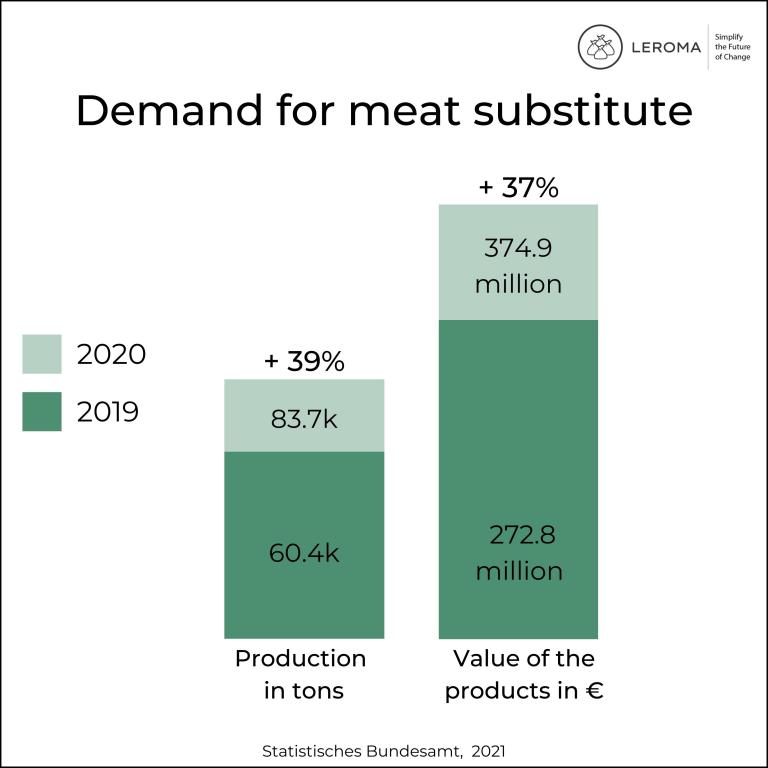Fermentation: How tempeh, kimchi and co are made
Previous articles in our magazine have already addressed the increasingly widespread health and nutrition trends. Above all, consumers' desire for a balanced diet and for new, health-promoting products play a role here. So-called
superfoods are particularly popular in this context. Superfoods are foods that are high in nutrients and often low in unhealthy fats or calories. Some of the
superfoods we featured included algae,
avocados and goji berries, for example. And there is also a growing desire for little to no processed foods. This health trend is called
"clean eating". Additionally, purely
plant-based foods are also becoming more popular due to their health benefits and besides that, choosing a plant-based diet is the biggest contribution an individual can make to protect the climate. Plant-based foods are considerably more resource-efficient than animal products. Their production requires less water and emits significantly less CO2.
Our diet is crucial for both the physical as well as the mental health. Many consumers have already recognized this for themselves and it is difficult to imagine the food industry without the health trend any more. More and more food manufacturers are taking advantage of this trend and are producing products that meet the needs of this target group. Less processed, natural, certified organic as well as plant-based products without artificial additives but with high nutrient content are gaining more and more popularity. One of those approaches is fermentation of (plant-based) products, because it brings some great advantages.
What is fermentation?
Fermentation is not a new nutrition trend. People have been fermenting food to make it last longer for about
10,000 years. Since back then, there were no possibilities of food cooling, like they exist today, people came up with something else to make the products longer edible. In fermentation, organic substances are converted microbially or enzymatically into
acid, gases and alcohol. The substances can be of animal or vegetal origin. The addition of bacterial or fungal cultures or enzymes changes the starting product so that it acquires a longer shelf life. However, a fermentation process can also occur without the external addition of microorganisms, since some foods already contain natural lactic acid bacteria, which can be developed by adding salt and water at temperatures around 20°C. This is then called 'wild fermentation'. The process of fermentation is therefore a type of traditional preservation that does not require electricity.
There are some fermented products that we probably all know: Sauerkraut, black tea, beer, soy sauce or sourdough bread. And although fermentation is a very
old method, it is still
modern and worthy of attention. Because, in addition to shelf life, the fermentation process also shows some health and taste peculiarities, which will be explained in more detail later. Unlike products that have been highly heated for preservation, fermented products retain or develop many valuable nutrients that the body needs. The health benefits and the mostly low processing of fermented products make them a kind of superfood and thus increasingly move into the interest of society. Therefore, the food industry is also rediscovering this topic and trying to serve the needs and
desires of consumers.
The advantages of fermentation
Fermenting food entails a number of advantages. Aside from the production of special products such as alcoholic beverages (wine, beer), dairy products (cheese, yogurt) as well as sauerkraut, kimchi or tempeh, fermentation provides a longer shelf life, a special taste as well as health benefits. In the future, companies will look at new trends and ferment more organic materials to develop new tastes as well as textures.
Shelf life: As mentioned earlier, food is preserved through fermentation. The fermentation process produces gases, alcohol and acids, which provides the longer shelf life of the food. Fermented foods can last up to two years if they are sealed airtight and stored in a cool and dark place.
Taste: Furthermore, fermentation causes the products to develop special aromas and break down tannins, as in the production of tea or coffee. The resulting lactic acid gives the products a fresh sour taste. They also get a delicious umami note. If ''
umami' doesn't ring a bell: the term originates from Japan and is a fifth flavor in addition to sweet, sour, salty and bitter. Just like the other four flavors, it is recognized by the taste receptors on our tongue. More precisely, umami denotes the taste of proteins or salts of the amino acid glutamate and acts as a natural flavor enhancer. Many would describe the flavor as spicy or savory. The flavor can vary from product to product because the biochemical process can vary with each fermentation.
Health: Fermented products also have many health benefits. The microorganisms produced during fermentation are especially good for our intestine. The probiotic cultures enter the intestines and settle in our intestinal flora, which illustrate a separate microorganism in our body in which about 100 trillion bacteria live. These not only help with digestion, but also produce vitamins and detoxify the body. Thus, they support and strengthen our immune system. The good bacteria drive out pathogenic bacteria, and the lactic acid bacteria (lactobacilli) from fermentation can support. The lactic acid bacteria can thus support the maintenance of a healthy intestinal flora in the long term and strengthen the barrier function of the intestinal mucosa.
As consumer awareness of the health benefits of fermented products continues to expand, the food industry is looking at incorporating these benefits into new product ideas and developing new processes to address a niche market.
Fermented vegetables - Kimchi
We are all familiar with sauerkraut. It is one of the best known German national dishes and represents an important vitamin C supplier in winter. The Korean version of sauerkraut is called kimchi. Here, cabbage is often fermented together with other vegetables and spices. The Bavarian startup "completeorganics" wants to bring the well-tried and traditional method of fermenting vegetables to the people. It is the first German company with a fermentation factory. Their vegetables are full of living microbiomes, unpasteurized, minimally processed and without any additives. The vegetables used are organic and the final product is vegan. The vegetables are fermented naturally. In this process, the carbohydrates in the vegetables are converted into lactic acid by added bacteria in a biochemical process, which then serves as a natural preservative. In the future, the company would like to continue working on their recipes as well as the starter cultures to optimize the flavors. This will be done by using different bacteria that develop different flavors to achieve the best taste experience.
The interaction of spices and the fermentation can produce tastes reminiscent of animal products - for example, the taste of Parmesan cheese or smoked meat. Thus, many different tastes can be achieved.
Fermented Soybeans - Tempeh
The London-based start up "Better Nature" has made it its mission to bring tempeh into the mainstream. The production of tempeh is about 300 years old and originates from Indonesia. The product is made primarily from soybeans, which are first cooked and then fermented. However, it is also possible to use and ferment any other legumes or nuts and seeds. The company believes that tempeh is capable of conquering the market as a complete protein source due to its health-promoting properties, such as its high nutritional content and probiotic strains. The product contains many things that many consumers always want. The fermentation process increases the protein content of the soybeans, decreases the fat content and subsequently allows the nutrients to be better absorbed by the body.
Tempeh is intended to serve as an alternative, plant-based, digestible source of protein, but it does not imitate the taste of meat. In addition, it is minimally processed and contains few ingredients compared to other meat alternatives.

Because tempeh is produced from plant-based ingredients, it produces 94% less CO2 emissions than beef, 78% less than pork, and 62% less than chicken. The aspect of sustainability is increasingly becoming a competitive tool. In Germany, the demand for meat substitutes has risen sharply, especially during the pandemic, and so has awareness of the need to reduce one's own meat consumption. In 2020, per head meat consumption dropped to a low of 57.3 kg. At the same time, some corporations have been able to achieve higher sales with their vegetarian or vegan products than with their animal products. Plant-based products are increasingly conquering the market.
Meat alternative from mushrooms and the use of side streams in production
"Kinoko Labs" is a biotech company that aims to develop a new generation of meat alternatives, with the help of a unique fermentation process. The meat is to grow on a fungal mycelium and provides a sustainable, plant-based alternative to meat. The mushroom-based alternative is said to be minimally processed, nutrient-dense and score points for its fibrous texture - similar to meat. The alternative is said to offer the full flavor experience and nutritional level, as well as be affordable. To do this, they use a combination of microbial fermentation and the fibrous nature of mycelium. Steaks, fillets and chops will be developed and produced this way. The company is still in the early stages and is initially developing prototypes.
The startup is also focusing on using
side streams from food production for their fermentation process. Side streams are residual materials that are regularly produced during food production. These can be eggshells or bones, for example, but also peels, oils or pomace from fruit and vegetables. Kinoko Labs wants to
upcycle these residual materials and thus establish a sustainable circular economy. The low-cost biomass will be used to feed the mushroom strains on which the 'meat' will grow and achieve exponential growth. The plan is to move production to where the side streams occur. The company's target audience are people who place value on plant-based, clean and minimally processed foods. The product can be used in the same way as meat.
By the way: it is already possible to recreate milk proteins using yeast organisms. This creates a synthetic form of milk that consists of the same building blocks, but does not contain milk and can be produced in a much more environmentally friendly way.
Fermentation is therefore an attractive and future-oriented solution for preserving food and achieving health and taste benefits. In the future, it will be possible for industry to use large fermenters for a modern process and ferment many different organic substances. In addition, side streams can be used for the processes to feed the fungal cultures. LEROMA would like to draw attention to these possibilities of valorization of residual materials, as well as preservation of food. Too much food is still wasted even at the beginning of the value chain, i.e. in agriculture and processing.
Let's simplify the future of change!







